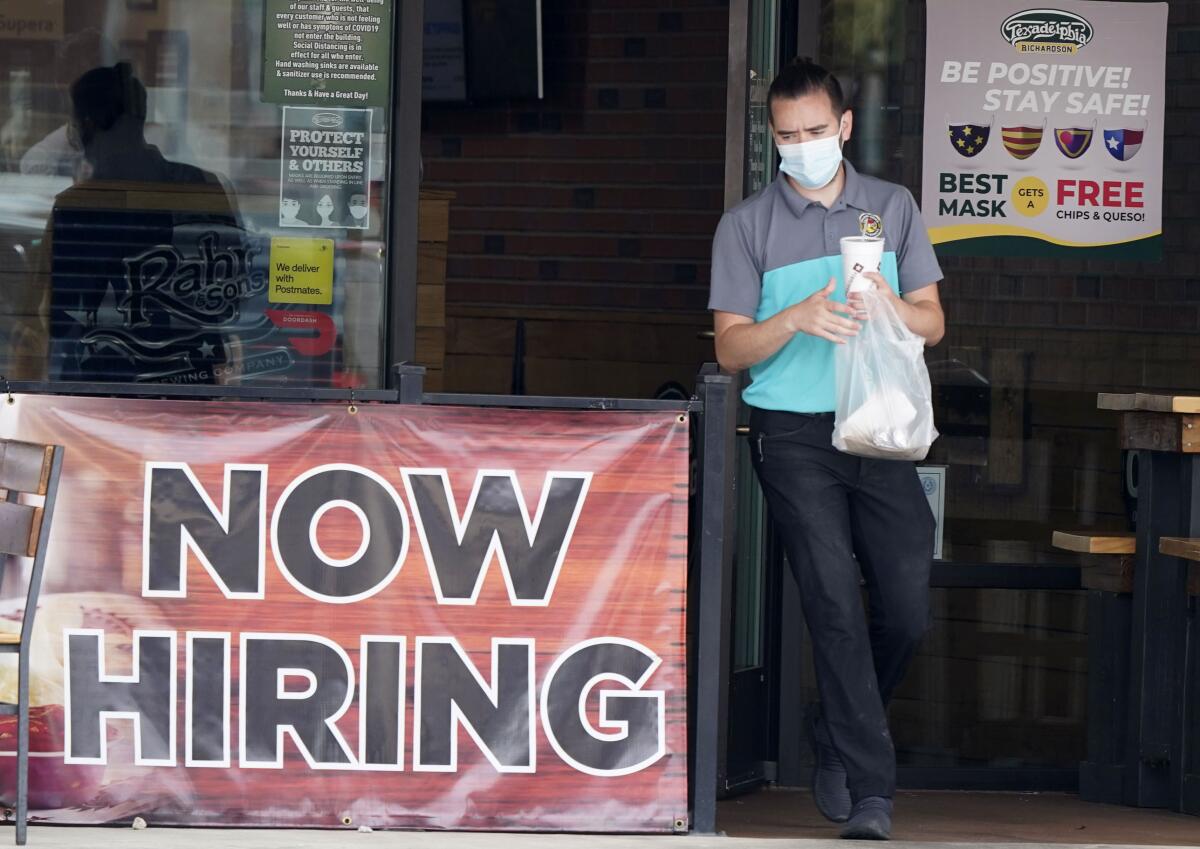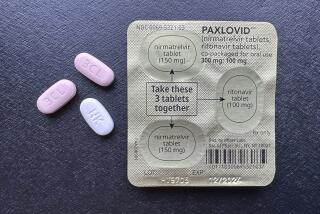Opinion: Jobs are going up. So are COVID-19 cases. Sadly, that’s no coincidence

The October jobs report released Friday shows that 2.2 million more people were employed last month compared with September.
That might help to explain the other increase reported this week — the one in new coronavirus infections, which hit a record high in the United States on Thursday and show no sign of abating.
The increase in employment is far from the only factor involved; health officials say social gatherings may be a bigger part of the problem. And in at least some states, employers are required to follow strict infection-control protocols. Nevertheless, the rise in job numbers reflects the easing of controls on commerce and activity that state and local governments have used to slow the virus’ spread.
It’s a failure of epic proportions that the COVID-19 pandemic was allowed to reach this point. What’s worse, policymakers here never figured out how to corral the disease without ordering people to stay home and curtail their activities. The lockdowns triggered a deep recession, which took (and continues to take) its own toll on lives and livelihoods.
So even though what appears to be a third surge of infections started in September, states continued their efforts to reopen offices, return to in-person classes and resume other pre-pandemic routines. The parallel results: many Americans went back to work, bringing the unemployment rate down to 6.9%; and many Americans contracted COVID-19.
It seems intuitive that increasing people’s exposure to others, especially for sustained periods, indoors, would cause infections to spread. But other countries (South Korea and New Zealand, to pick two examples) have shown that it’s possible to keep a few new infections from becoming dozens — without resorting to lockdowns.
Here’s how the Wall Street Journal described key parts of the South Korean response: “Virus experts stand at the podium of government briefings and frequently warn of looming catastrophe. Nearly everyone in the country wears masks. Every confirmed patient, even those with no or mild symptoms, gets isolated at hospitals or converted dormitories run by the government. Treatment is free. As a result, South Korea never had to mandate a lockdown, so restaurants and business were able to stay open, cushioning the blow to the economy.”
It’s easy to see how the U.S. response differs. Political leaders offered conflicting views on the severity of the situation. Most people don’t wear masks. Asymptomatic people aren’t sent into quarantine. Treatment is expensive.
Beyond that, in much of the country there are too many new cases to effectively identify and notify everyone who’s been exposed to the virus, so COVID-19 spreads largely unimpeded. At one point the Centers for Disease Control and Prevention even put out guidance suggesting that people who’d been exposed to someone with COVID-19 shouldn’t get tested — a recommendation that came not from medical experts, but from White House political appointees, and was withdrawn days later.
During the last presidential debate, President Trump argued that the country needed to get back to normal. “This is a massive country with a massive economy,” Trump said. “People are losing their jobs. They’re committing suicide. There’s depression, alcohol, drugs at a level that nobody’s ever seen before. There’s abuse, tremendous abuse. We have to open our country. I’ve said it often, the cure cannot be worse than the problem itself, and that’s what’s happening.”
But that betrayed a binary view of the problem, as if lockdowns were the only answer. In response, Joe Biden said, “We ought to be able to walk and chew gum at the same time. We ought to be able to safely open, but they need resources to open.”
In a way, it was a classic Democratic Party response — throw money at the problem! And while new funding will be needed, the important ingredient is a new strategy. Specifically, one that’s aimed at finding and isolating the virus so that Americans can not only go back to work, but go back to work safely.
The jobs report Friday showed that the economy is heading in the right direction, but it has a long way yet to go. Unemployment remains almost twice as high as it was a year ago. The labor force participation rate remains considerably lower than it was last fall, and the number of long-term unemployed increased almost 50% from September to October.
And thanks to Trump’s Warp Speed project, the country may see one or more vaccines for COVID-19 by year’s end. It will still take months to make them available to most Americans, but that’s crucial progress.
Even with a vaccine, though, we’ll still need a better strategy for containing COVID-19. That’s what the other numbers released this week are telling us, and we ignore them at our peril.
More to Read
A cure for the common opinion
Get thought-provoking perspectives with our weekly newsletter.
You may occasionally receive promotional content from the Los Angeles Times.











